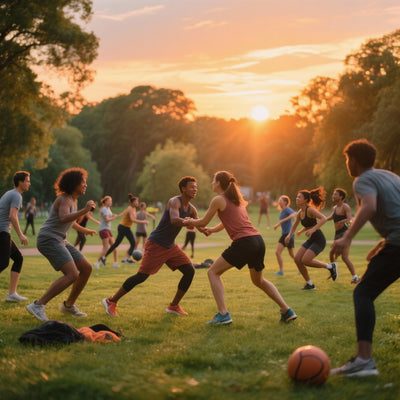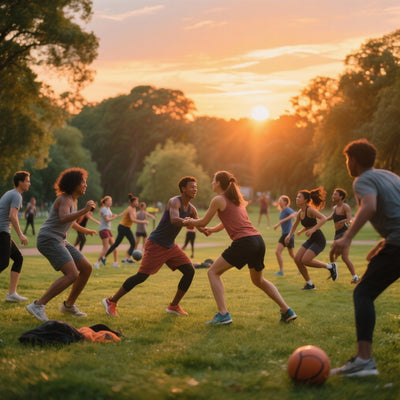Why Breathing Through Your Nose During Exercise Limits Your Oxygenation
Breathing is a vital function, often taken for granted. We breathe thousands of times a day without even thinking about it. But when we exercise, the way we breathe can have a significant impact on our performance and well-being. One question often arises: should we breathe through our nose or our mouth during exercise? While nasal breathing is often praised for its numerous benefits at rest, what about when we push our physical limits?
This article explores in depth why nasal breathing, while beneficial in many situations, can limit your oxygenation during intense exercise. We'll examine the physiological aspects of breathing, the advantages and disadvantages of each method, and how to optimize your breathing for peak performance and improved endurance.
The Physiology of Respiration: Nose vs. Mouth
To understand why nasal breathing can be limiting during exercise, it's essential to know the fundamental differences between nasal and mouth breathing. Nasal breathing offers several advantages at rest. The nose filters, humidifies, and warms the air before it reaches the lungs, protecting the airways from irritants and infections. It also allows for the production of nitric oxide, a vasodilator that improves blood circulation and tissue oxygenation. Furthermore, nasal breathing promotes slower, deeper breathing, stimulating the parasympathetic nervous system, promoting relaxation, and reducing stress.
However, during exercise, the body's oxygen requirements increase significantly. Mouth breathing then becomes a more efficient way to inhale larger volumes of air quickly. The mouth offers a wider and more direct passage to the lungs, allowing for greater ventilation and better meeting the increased oxygen demands. In other words, nasal breathing, while advantageous under conditions of low demand, can become a bottleneck during intense exertion.
The Limits of Nasal Breathing During Exertion
Several factors contribute to limiting oxygenation during nasal breathing during exercise:
- Increased resistance: The nose offers greater resistance to airflow than the mouth. This increased resistance can make it more difficult to inhale the air needed to fuel the muscles during intense exercise.
- Limited air volume: Nasal breathing limits the volume of air you can inhale with each breath. During strenuous activity, your muscles need a massive supply of oxygen, and mouth breathing is more efficient at providing this volume.
- Reduced efficiency: Although nasal breathing offers advantages in terms of filtration and humidification, these advantages become less important when the priority is to obtain as much oxygen as possible quickly.
When is nasal breathing acceptable during exercise?
Nasal breathing can be appropriate during low-intensity physical activities, such as walking, gentle yoga, or warm-ups. During these activities, oxygen demand is lower, and the benefits of nasal breathing (air filtration, nitric oxide production) may outweigh its limitations. Furthermore, practicing nasal breathing during low-intensity activities can help improve respiratory function and strengthen respiratory muscles.
However, as soon as the intensity of the exercise increases and you begin to feel short of breath, it is generally best to switch to mouth breathing to meet the increased oxygen demand.
Optimize Your Breathing for Performance
The key to effective breathing during exercise is adaptability. Here are some tips to optimize your breathing:
- Listen to your body: Pay attention to your sensations. If you feel short of breath or have difficulty breathing through your nose, switch to mouth breathing.
- Combine nasal and mouth breathing: You can use nasal breathing during periods of low intensity and switch to mouth breathing during greater efforts.
- Practice diaphragmatic breathing: Diaphragmatic breathing, or abdominal breathing, involves using the diaphragm to inhale deeply into the abdomen. This technique can improve breathing efficiency and increase oxygen intake.
- Strengthen your respiratory muscles: Specific exercises can help strengthen the muscles involved in breathing, which can improve your endurance and performance.
Scientific Research and Expert Opinions
Numerous scientific studies have examined the effects of nasal and mouth breathing during exercise. A study published in the *Journal of Strength and Conditioning Research* found that mouth breathing allowed for greater ventilation and improved performance during high-intensity exercise. Other studies have confirmed the benefits of nasal breathing at rest and during low-intensity activities.
"Breathing is the foundation of performance. Understanding how to optimize your breathing can help you reach your full potential." - Dr. [Name of a fictional sports physiology expert].
In conclusion, nasal breathing offers numerous benefits at rest and during low-intensity activities. However, during intense exertion, it can limit your oxygenation due to increased resistance and reduced air volume. Listen to your body, adapt your breathing to the intensity of the exercise, and don't hesitate to switch to mouth breathing when necessary. By optimizing your breathing, you can improve your performance, endurance, and overall well-being.
Explore our other articles on breathing and sports performance to deepen your knowledge and discover advanced techniques.











